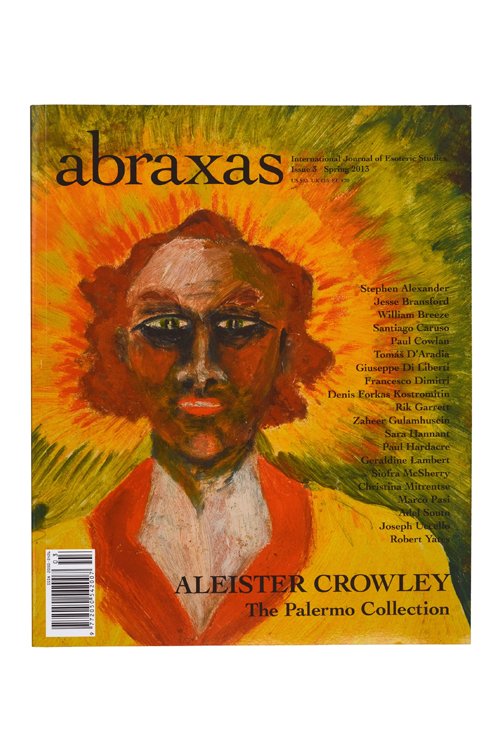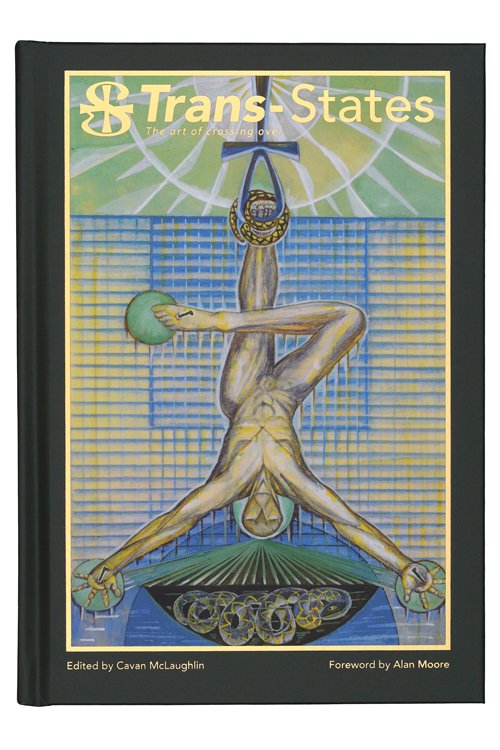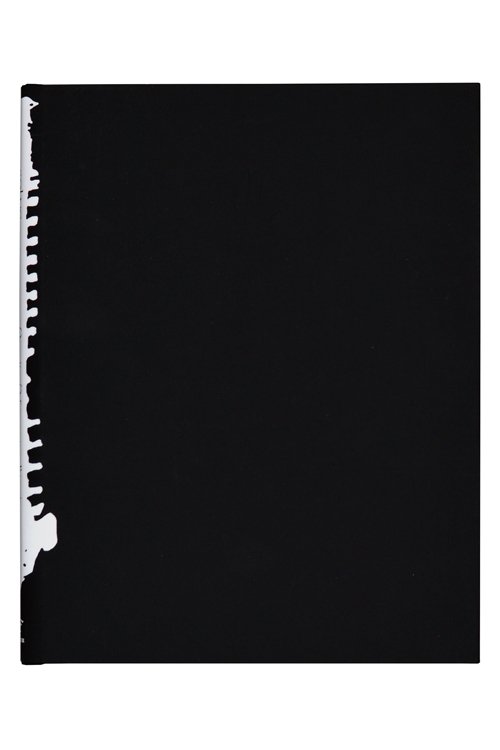Fulgur Press
Fulgur Press is the leading independent publisher for esotericism and magic in visual culture. Founded in 1992 by Robert Shehu-Ansell, the press works with artists, writers and editors who explore ideas of agency and enchantment through scholarship and practice. With an emphasis upon material quality and editorial rigour, we seek to make books that challenge the Enlightenment treatment of magic and so rediscover its role and cultural impact today.
Re-examining esoteric ideas and taking them into new cultural spaces interests us. We believe these ideas offer a means to reconnect with nature, identity and a sense of meaning in the world today. Over the last 125 years, enquiring artists have explored such ideas with similar aims. Our publishing and events programme celebrates their work and provides the tools for others to develop these ideas further.
Website - https://fulgur.co.uk

Luminous Screen is our second Special Issue of Abraxas. It is a collection of essays commissioned by guest editor Jack Sargeant that seek to explore the impact of esotericism on cinema.
Our first Special Issue of Abraxas Journal offers 128 large format pages of essays and art drawn from selected papers presented at the 2012 University of Cambridge Conference, Charming Intentions: Occultism, Magic and the History of Art.
Abraxas Issue #6 offers more than 160 large format pages of essays, poetry, interviews and art. Printed using state-of-the-art offset lithography to our usual high standard, contributions for Abraxas #6 include an interview by Anna Dorofeeva with the artist, Penelope Slinger, who also kindly designed the cover for this issue
Abraxas Issue #5 offers 180 large format pages of essays, poetry, interviews and art.
Abraxas Journal Issue #4 offers 192 large format pages of essays, poetry, interviews and art. Printed using state-of-the-art offset lithography to our usual high standard, contributions for Abraxas #4 include a previously unpublished manuscript by Austin Osman Spare entitled Fragmentum presented here in facsimile over 30 pages
Abraxas Journal #3 offers 176 large format pages of essays, poetry, interviews and art. Printed using state-of-the-art offset lithography to our usual high standard, Abraxas 3 is richly illustrated and employs a variety of papers.
Following the enormous success of the first issue, we are delighted to announce Abraxas No.2 is now available. Substantially larger than the first issue, Abraxas No.2 offers over 200 pages of essays, poetry, interviews and art.
Straddling the worlds of Surrealism, occultism and modernist literature, Ithell Colquhoun (1906–88) was widely respected in her lifetime, but her transgressive, esoteric and poetic paintings and writings were long neglected until Richard Shillitoe’s 2009 book Ithell Colquhoun: Magician Born of Nature initiated her revaluation
The syncretic nature of Theosophy encouraged individualism in belief, fitting well the popular notions of freedom and personal agency used to characterize the American West.
Trans- States is an experimental, transdisciplinary conference held at the University of Northampton that seeks to bring about a valuable convocation of esoterically-inclined minds: a meeting of academics, independent scholars, magical practitioners and artists with shared interests in both the study and production of contemporary occulture.
SÉANCE – part documentary, part ghost story – Taggart offers us haunting images exploring Spiritualist practices in the US, England and Europe: 150 of her original photographs, many of which have never been published, as well as rare historical photographs.
Artist and photographer Rik Garrett’s Earth Magic explores historical and personal relationships between witchcraft, femininity and nature through a series of images created using the traditional wet plate collodion process.
Distillatio is the final volume in Orryelle’s four-fold Alchymic book-web The Tela Quadrivium. For eight years Orryelle worked only in black and white (with touches of gold and silver) for the previous volumes in the series, but in the last few years he has been exploring the alchemy of Colour in diverse media for this culminating volume.
In describing this new work Orryelle says, ‘Solve dis-solves the gold distilled in Coagula, tears apart our egos, dismembers our bodies and hurls any conceptions of perfection back into the primal void.
Lavishly illustrated by the artist, Coagula births the magical children born of the Gods and Goddesses united by the reader in Conjunctio. From these unions now the pages are divided, and the cosmic egg cracks open: hermaphrodites and hybrids from the conjunction of masculine and feminine, solar and lunar, silver and gold gestate within and coagulate back into the world of form. Images are accompanied by evocative descriptive texts, insights and a magical ‘foreword’ and ‘backword.’
Conjunctio presents mirrored pairs of Sacred Twins and Divine Lovers from various cultural pantheons coupled on facing pages. They are aligned in such a way that when the pages are turned the figures are United in holy conjunction by the alchemical reader. Different reflective relationships – alchymic opposites and complementaries – are explored b e t w e e n the pages.
Ontological Graffiti is Michael Bertiaux’s magnum opus. More than 40 years in development and a decade in production, this work now stands at over 470 pages and is without doubt his most substantial and important book yet.
Vudu Cartography explores the mysteries of ‘Les Vudu’ through chants, oracles, seances and a symbolic system of images – all connected by a descriptive narrative which leads us, like a dusty highway, through the shimmering Haitian landscape.
Intended as an introduction to a way of thinking, Cosmic Meditation considers the universe from the standpoint of the spiritist philosophy.
Touch Me Not is an Austrian manuscript compendium of the black magical arts, completed c.1795. Unique and otherworldly, it evokes a realm of visceral dark magic.
The Tarot of Leonora Carrington is the first book dedicated to this important aspect of the artist’s work. It includes a full-size facsimile of her newly discovered Major Arcana
Drawn from their pioneering documentary work in the late 1940s, the original Carfax Monographs were an ambitious crossroads of art and occultism from the early magical career of Steffi and Kenneth Grant. Privately published as a series of occult essays with hand-drawn images by Steffi between 1959-1963, the original monographs were produced in very small numbers. Few survive.
When writing the original synopsis of this work in the early 1960s, the authors made clear that the purpose of The Carfax Monographs was to reconstruct and elucidate the hidden lore of the West according to the canons preserved in various modern esoteric orders and movements.
Borough Satyr: The Life and Art of Austin Osman Spare is the long awaited full colour introduction to the work of this astonishing London artist.
Since Antiquity, the idea of the artist as a magician, trickster and powerful creator of new realities has established itself as a fertile idea in the discussion of image-making. The conjuring of illusions, the inherent link between the material and the spiritual and the wish to make the invisible visible are all part of this wider discourse.
In 2013 artist Jesse Bransford produced an exhibition for the Galveston Artist Residency. Titled The Fourth Pyramid, the exhibition was conceived at the prompting of founder/director Eric Schnell. From this prompt Bransford created a ‘spell’ for the city of Galveston, a large, multi-stage installation that operated with explicit magical intent.
Icelandic folk magic and magical texts — so-called low and high magic – combine as sources and inspiration for A Book of Staves by Jesse Bransford.
Written over the course of twenty days, coming in and out of trance states brought on by intermittent fasting and somatic rituals while secluded in the tower of a 100-year-old church – the Star and Snake Arts Centre – Ascend Ascend is Janaka Stucky’s most powerful book to date.
There are few modern love stories as passionate and poignant as the relationship between rocket scientist Jack Parsons and his artist lover, Marjorie Cameron.
In 1977, a series of 78 strange enamel works were exhibited in a small gallery in Cornwall. The vibrant images were modestly grouped together in five large frames. For the curious viewer the artist provided a page of explanation, affirming that these ‘psycho-morphological’ studies were, in fact, designs for a Taro. Within a few weeks, the exhibition was gone.






























